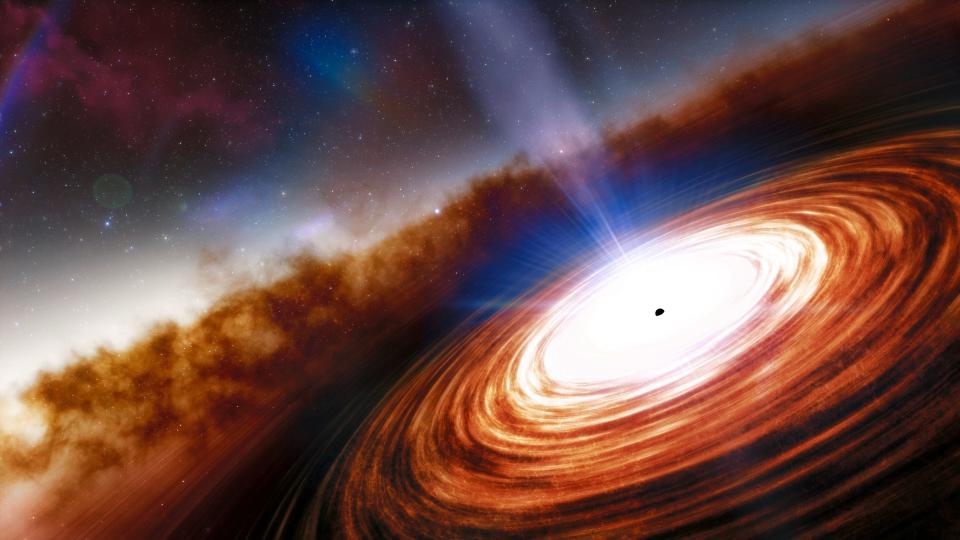Far out: Astronomers discover the oldest, most distant 'supermassive' black hole and quasar in the universe
A long time ago, in a galaxy far, far away...
The oldest, most distant "supermassive" black hole and quasar in the universe have both been discovered, astronomers announced Tuesday.
At more than 13 billion years old, the black hole and quasar are the earliest yet seen, giving astronomers insight into the formation of massive galaxies in the early universe.
Quasars are huge, incredibly bright celestial objects located in the center of galaxies. They are the most-distant known celestial objects and are crucial to understanding the early universe.
The newly discovered quasar and black hole date back to 670 million years after the Big Bang, when the universe was only 5% of its current age, astronomers said.
The discovery, which was announced Tuesday during the annual meeting of the American Astronomical Society, helps shed light on the environment in the ancient universe, CNET said.

“The most distant quasars are crucial for understanding how the earliest black holes formed," said Xiaohui Fan, an astronomer at the University of Arizona and co-author of a new study about the discovery. The study has been accepted for publication in the journal Astrophysical Journal Letters.
The quasar is an incredible 1,000 times more luminous than our entire Milky Way galaxy, and is powered by the supermassive black hole, which weighs in at more than 1.6 billion times the mass of our sun.
Wait, what?: Scientists say Earth is spinning faster than it has in decades
The newly discovered quasar offers a rare glimpse into the life of a galaxy at the dawn of the universe, when many of the galaxy-shaping processes that have since slowed or ceased in galaxies that have been around for much longer were still in full swing, the University of Arizona said in a statement.
Quasars are thought to result from supermassive black holes gobbling up surrounding matter, such as gas or even entire stars, resulting in a maelstrom of superheated matter known as an accretion disk that swirls around the black hole.
"This is the earliest evidence of how a supermassive black hole is affecting its host galaxy around it," said the study's lead author Feige Wang of the University of Arizona. "From observations of less distant galaxies, we know that this has to happen, but we have never seen it happening so early in the universe."
The observations that led to the discovery were made using a variety of observatories around the world, including several telescopes in Hawaii.
This article originally appeared on USA TODAY: Oldest, most distant quasar and supermassive black hole discovered

